Chapter 13
Finding Companies on LinkedIn
In This Chapter
![]() Following companies using LinkedIn
Following companies using LinkedIn
![]() Creating a Company page
Creating a Company page
![]() Sharing company updates with the community
Sharing company updates with the community
Two of the main reasons why people search the LinkedIn network are to find a job and to find a new employee. In both cases, LinkedIn users are trying to learn more about the company, not just the job seeker or hiring manager. Millions of self-employed people who use LinkedIn to promote not only themselves, but also their services, are always looking for a way to expand their brand and advertise their own opportunities. LinkedIn organizes all these efforts under their Company pages.
LinkedIn maintains a directory of Company pages that allow people to learn about each company's products, services, and job opportunities. Each Company page has at least one administrator who can add his company to the directory, edit the information, connect his employees to the Company page, and provide company updates to the LinkedIn community. LinkedIn members can “follow” their favorite companies to get company and industry updates, and see how each member's network is connected to the employees of each company they follow.
In this chapter, I cover how you can search Company pages, follow different companies, and, if you are an employee or owner of your own company, create and update your own Company page.
Searching for Companies
When you need to learn more about your current industry or find a potential business partner for a big deal, your first step is to do some research. LinkedIn's Company pages allow users to explore companies of interest, whether it's a for-profit or non-profit company, and receive company updates and industry news, as well as research each company's products and services — and, of course, learn about job opportunities the company has to offer.
To search for a Company page, just follow these steps:
- Hover your mouse over the Interests link from the top navigation bar and select Companies from the drop-down list that appears.
- On the Companies page, click the Search Companies link/tab (near the top of the screen).
The Companies Search home page appears, as shown in Figure 13-1.
LinkedIn automatically shows companies based on the number of people in your network who are currently connected to each company.
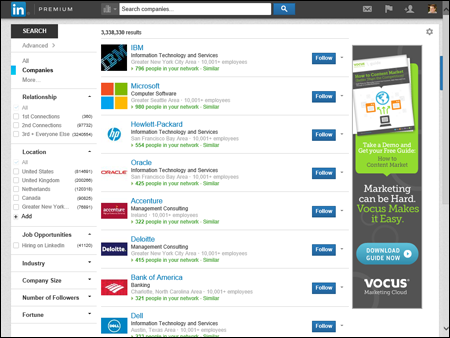
Figure 13-1: Start your company search here.
- In the text box along the top of the screen, enter the keywords for your company search. In the left pane, use the Relationship, Location, Industry, and other filters to refine your search.
Let's say I'm looking for an Internet company in the United States where at least one person in my network is employed. Figure 13-2 shows the 29 companies that show up in my refined search, and this search used no keywords yet.
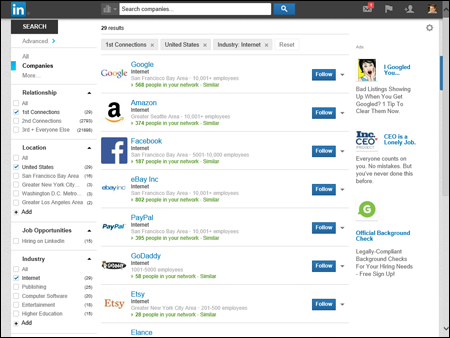
Figure 13-2: See companies that match your search results.
After you reach a page loaded with potential companies, use the following tricks to find the one that's just right for you:
- Click the Follow button to keep track of that company. When you click the Follow button next to any company listing, you add that company to your list of companies that you are following. This means you will see all the company updates in the Companies section of your LinkedIn page.
- View the Company page and study your connections. To see the Company page, either click the name of the company, or click the drop-down arrow next to the Follow button and then click the View link. You can study the information on that page before deciding whether to follow the company. You can also view how you're connected to people inside the company.
For example, I'm looking at Microsoft's Company page, as shown in Figure 13-3. On the right side of the page, under the How You're Connected header, I can see how many people in my immediate network, or first-degree connections, are associated with that company, and by extension, how many second-degree network members (that is, a colleague of a colleague, or a friend of a friend) I would have at that company. If I click the See All link in that section, I get a list of how I'm connected to people in that company, as shown in Figure 13-4. This page is a search results screen, so I can add more keywords or filters to get a defined list of how I relate to any given company.
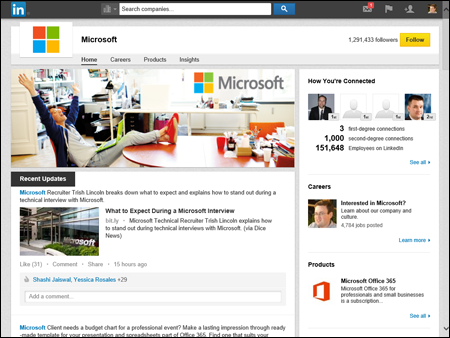
Figure 13-3: See how you're connected to a given company.
- You can search based on location. Let's say you're thinking of moving to a new city and are looking for potential companies to interview with in that city. Click the Location filter and either pick the Region that matches your destination, or click the +Add link and input your city. LinkedIn automatically pops up the region in their database associated with that city. (For example, if I type Seattle, LinkedIn eventually displays Greater Seattle Area.) When you see the correct region, click that listing to get a targeted search list of companies in that area.
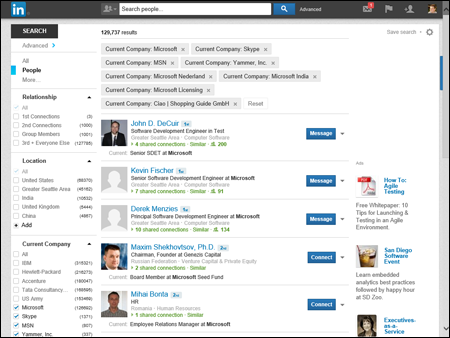
Figure 13-4: Then see a full list of connections for further search.
Your search can include multiple locations, so you can select multiple regions, and the results list will include companies headquartered in at least one of those regions. Be aware that if you only want one specific region, you need to deselect your country filter, like United States, for example, and select only the region.
- Decide who to follow by studying number of followers. If you've got a lot of options for companies, you can use one of the newer filters, Followers, to refine your search based on the number of members who are currently following that company and show you the most-watched companies for your search criteria. Choosing the option 5001+, for example, shows only those companies that currently have more than 5,000 people following them.
Putting Your Company on LinkedIn
The flip side of understanding LinkedIn Company pages is to approach it on behalf of the company itself. Companies are always looking at ways to tell their story and engage interested members who want to follow their activities in a way that encourages word of mouth, highlights their products and services, and advertises career opportunities. LinkedIn Company pages allow companies to do all this as well as allow their customers to offer recommendations, which are spotlighted on the Company page.
As of this writing, there are more than 3 million Company pages on LinkedIn, and the number grows every day. The millions of LinkedIn users who follow these companies are current and potential customers, interested job applicants, business partners, and even curious industry watchers who want to hear the latest news, see the latest products and services, and reach out and interact with company leaders, managers, and employees. LinkedIn bills their Company pages as a “central hub” where millions of LinkedIn users can “stay in the loop” of company news and activities.
Requirements for a Company page
When you decide to list your company on LinkedIn Company pages, understand that there are some requirements to protect the quality of this directory while making it accessible to companies of all sizes. Here are some things to keep in mind:
- Your profile must show you're a current employee. In your LinkedIn profile Experience section, you must have a position that defines you as a current company employee, manager, or owner. If you don't have a position defined, you will need to create that position in your profile before continuing with this process.
- Have a company e-mail address defined in your account. You are allowed to associate more than one e-mail address with your LinkedIn account, so make sure that one of your e-mail addresses for your profile is a company e-mail with the company domain name. This e-mail does not need to be your primary address for LinkedIn for you to have a Company page.
- Your company's e-mail domain must be unique to your company. One way LinkedIn controls the integrity of its Company page directory is to make sure that each e-mail domain can only be used once to create a Company page. Free e-mail providers like Yahoo! Mail, Gmail, and Hotmail are too generic to be associated with any one company (besides the e-mail provider itself ), so an e-mail address from one of those providers is not sufficient.
 If your company doesn't have its own e-mail domain, consider creating a LinkedIn Group for your company, instead of a Company page, so that your employees, customers, and business partners can stay in touch.
If your company doesn't have its own e-mail domain, consider creating a LinkedIn Group for your company, instead of a Company page, so that your employees, customers, and business partners can stay in touch. - Your LinkedIn Profile Strength must be rated Intermediate or All Star. LinkedIn uses a system called Profile Strength to rank its users’ ability to create a robust profile, based on the number of sections a LinkedIn user has defined on her profile and network. LinkedIn wants its Company page administrators to have a strong understanding and ability to use LinkedIn so they can manage their page properly, so the Profile Strength rating must be Intermediate or All Star in order for them to create a Company page.
- You must have several first-degree connections on LinkedIn. Company page administrators on LinkedIn need to be part of the LinkedIn community in general, so LinkedIn requires that administrators have more than just one or two LinkedIn connections before they can create a Company page.
Adding a Company page to LinkedIn
After you've met the requirements for creating a Company page on LinkedIn, it's time to get started by adding the Company page to LinkedIn's system. To create your Company page, just follow these steps:
- Hover your mouse over the Interests link from the top navigation bar and then click the Companies link from the drop-down list that appears.
- On the Companies page that appears, click the Add a Company link (on the right side of the screen).
You're taken to the first step in the process, the Add a Company page (see Figure 13-5).
- Enter the company name and company e-mail address in the fields provided, and then select the check box verifying you are the official representative of your company.
 Make sure the e-mail address you are providing is your company e-mail address, with the unique e-mail domain for your company, and that your company e-mail address has been added and verified to your LinkedIn personal account first.
Make sure the e-mail address you are providing is your company e-mail address, with the unique e-mail domain for your company, and that your company e-mail address has been added and verified to your LinkedIn personal account first. - Click the Continue button.
You're taken to the edit mode for your Company page (see Figure 13-6).
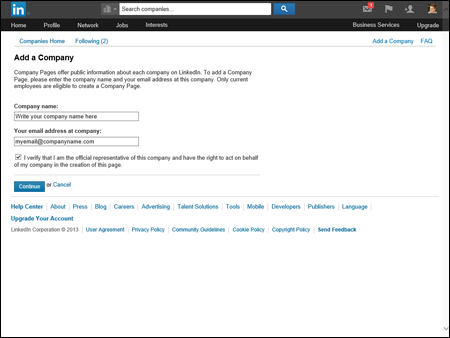
Figure 13-5: Define your Company page on LinkedIn.
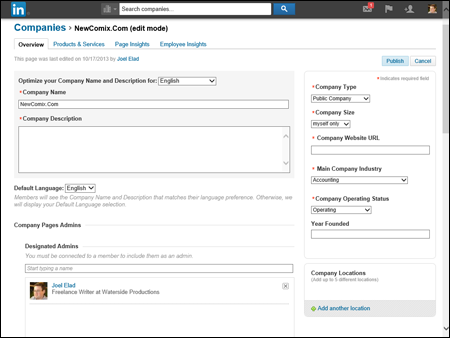
Figure 13-6: Fill in the details for your Company page.
- Fill in the information in the fields provided: Company Name, Company Description, Company Type, and so on. Be sure to complete any field with a red asterisk, because those are required pieces of information for a Company page.
- (Optional) Scroll down and provide a company image, a standard logo (100 by 60 pixels is recommended), or a square logo (50 by 50 pixels is recommended). List any company specialties and LinkedIn groups that are relevant to your company in the fields provided.
- If you want to add another administrator for the Company page, enter his name into the field below the Designated Admins header.
 The person you name as a page administrator must already be one of your first-degree connections on LinkedIn.
The person you name as a page administrator must already be one of your first-degree connections on LinkedIn. - Scroll back to the top of the page and click Publish.
You see a confirmation message that your Company page has been successfully updated, as shown in Figure 13-7. Now you can start to provide company updates, add products or services, or edit your page.
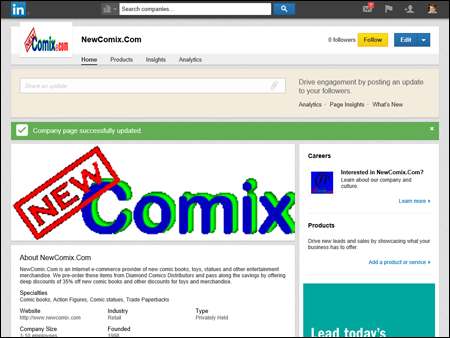
Figure 13-7: Your Company page has been updated!
Now that you've created your Company page, think about incorporating your page management duties into your normal LinkedIn activity schedule. While it's important to properly set up your LinkedIn Company page, you'll want to spend some time on an ongoing basis to make sure you're properly communicating and responding with your followers and the community in large.
Here are some tips on how to proceed with administering your Company page:
- Follow your competitors. Not only will you gain insight into what your competitors are doing, you can see how they are using their LinkedIn Company page, which may give you ideas on how to position your Company page and what updates to share with your followers.
- Add products or services. Providing your basic company information is the first step. Next is defining the products or services that your company offers, so prospective customers can learn more about you and potentially try you out. Think about highlighting the right keywords and features that your customers want to see when defining your products or services on LinkedIn.
- Ask your customers to recommend your company. On LinkedIn, recommendations are not limited to those given to people. You can ask your current customers to write a recommendation for your company, which will appear on your Company page. Recommendations give any potential customers a great reason to consider your company.
- Gain insight into how your company relates to your network. When you click the Insights tab (located near the top of your Company page, below the Company name, next to the Overview and Products links), you can see some overall sets of information, like any former employees of the company that are in your own network, similar companies that were viewed by people visiting your page, your company employees with the most recommendations, and the skills that show up most often on your employees’ LinkedIn profiles.
- Keep an eye on the analytics. LinkedIn provides a lot of information about how its members are viewing and interacting with Company pages. Click the Analytics tab (located near the top of your Company page, below the Company name, next to the Products and Insights links) to see how your followers are viewing and responding to your updates, as well as how many people you are reaching through your Company page — and how engaged they are with your Company page.

 If you plan on using any keywords in your search, enter those words first into a search before using the filters to narrow your search. Otherwise, when you enter keywords into the top navigation bar search box, you will automatically reset your search filters, like Relationship, Industry, or Location.
If you plan on using any keywords in your search, enter those words first into a search before using the filters to narrow your search. Otherwise, when you enter keywords into the top navigation bar search box, you will automatically reset your search filters, like Relationship, Industry, or Location.